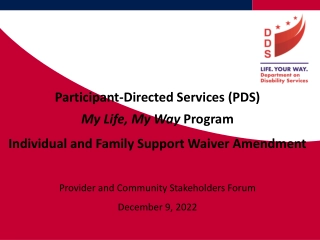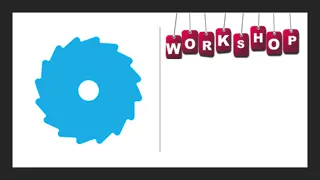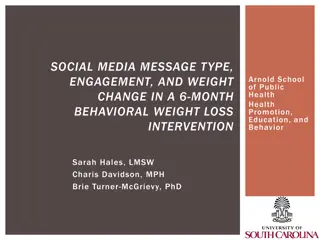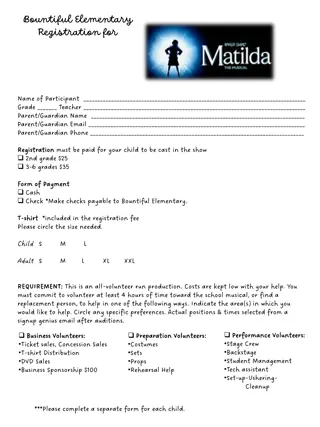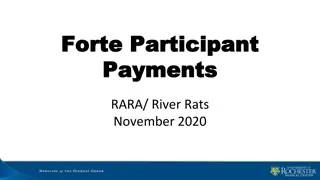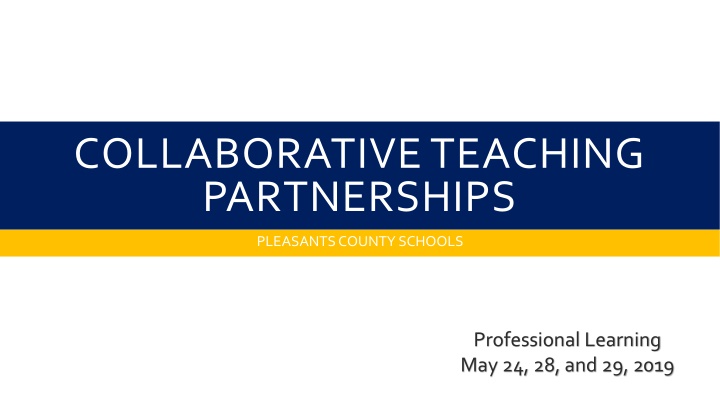
Collaborative Teaching Partnerships in Education
Explore the importance of collaborative teaching partnerships in education, focusing on supporting students with diverse learning needs, IEP requirements, and more. Discover strategies for effective co-teaching and the services provided for student success in general education classrooms.
Download Presentation

Please find below an Image/Link to download the presentation.
The content on the website is provided AS IS for your information and personal use only. It may not be sold, licensed, or shared on other websites without obtaining consent from the author. If you encounter any issues during the download, it is possible that the publisher has removed the file from their server.
You are allowed to download the files provided on this website for personal or commercial use, subject to the condition that they are used lawfully. All files are the property of their respective owners.
The content on the website is provided AS IS for your information and personal use only. It may not be sold, licensed, or shared on other websites without obtaining consent from the author.
E N D
Presentation Transcript
COLLABORATIVE TEACHING PARTNERSHIPS PLEASANTS COUNTY SCHOOLS Professional Learning May 24, 28, and 29, 2019
WHAT IS THIS TRAINING ALL ABOUT? Support Collaborative Teaching Partnerships
NEW LANGUAGE CONTENT SPECIALIST STRATEGIES SPECIALIST In-depth understanding of the content standards, pacing, curriculum, foundational skills, etc. In-depth understanding of strategies to support students with various learning needs, IEP requirements, etc.
WHY GENERAL EDUCATION CLASSROOMS? Standards drive the curriculum and instruction. The GSA is the assessment utilized to determine each and EVERY student s level of proficiency and growth. The IEP team of each student must determine the Least Restrictive Environment (LRE) for learning the Standards. Students whose LRE is the General Education Environment (GEE) are afforded appropriate accommodations, modifications, and specially designed instruction needed to achieve growth and proficiency on these standards as measured by the GSA. General education classrooms are taught by highly qualified experts in the required content, curriculum and pacing required for achievement.
WHY CO-TEACHING? A student s IEP is the roadmap describing the student s strengths and challenges in the content areas, behavior, functional skills, and social skills. Based on this roadmap, a team of educators, parents, the student (if appropriate), therapists, and other stakeholders determine the annual goals necessary for the student to succeed. Goals must address critical competencies that lead to grade level success. Goals must include a timeframe, condition, behavior and evaluation criteria with procedure. The CONDITION statement identifies the SPECIALLY DESIGNED INSTRUCTION the student will need in order to achieve the goal.
WHAT SERVICES? In order for the student to achieve his/her goals, appropriate supports must be put in place. These supports are identified on the services section of the IEP. The location that the services are to be delivered in are determined by the IEP team. This is how the LRE is determined. The services are divided into three sections: A. Supplementary Aids, Services and Program Modifications B. Special Education Services C. Related Services
SUPPLEMENTARY AIDS, SERVICES AND PROGRAM MODIFICATIONS Provided in the general education environment Matched to student s needs and setting demands Includes supports beyond those provided to all students EXAMPLES: Behavior Support Plan (BSP), Assistive Technology, Specialized Equipment, Extended Time, Oral Testing, Word Banks These services do not require a special education teacher to provide them. These are all services that are provided in the regular classroom, typically by the general educator. They are documented on the Accommodation Calendar for each student.
SPECIAL EDUCATION SPECIALLY DESIGNED INSTRUCTION Carefully planned, coordinated, individualized learning experiences Adapting content, methodology and delivery of instruction Evidence-based Provided or coordinated by the SPECIAL EDUCATOR. Examples include scaffolding, executive function tools (timers), task analysis, intensive modeling, multi-modality instruction, constant visual supports, pre-teaching (flipped lessons), memory/review skills, attention strategies, individual behavior supports.
SPECIAL EDUCATION SERVICES Direct instruction provided by a special educator In the appropriate environment (general education setting or special education setting) And when the direct instruction occurs in the general education setting, it is called CO-TEACHING!
There is somebody There is somebody smarter than any of us, smarter than any of us, and that is all of us. and that is all of us. Michael Nolan
CO CO- -TEACHING TEACHING CAFE CAFE DUET MODEL LEAD AND SUPPORT MODEL Ingredients COMPLEMENTARY SPEAK/AD D ADAPTING LEARNING STYLE WHOLE GROUP STATION SKILL GROUPS PARALLEL
Lead and Support Model Content specialist does the up front planning. Strategies specialist is fully involved in daily planning, implementation, and assessment. Both teachers are involved in most phases of instruction. Less time intensive in the planning phase than the Duet Model.
Duet Model Both teachers share the ENTIRE instructional process, including up-front and daily planning. Most integrated approach for the students Fully utilizes ALL expertise of both teachers More time intensive than Lead and Support
Vital to consider this aspect while planning instruction CONTENT . What the student needs to learn. The instructional concepts should be broad based, and all students should be given access to the same core content. However, the content s complexity should be adapted to students learner profiles. Teachers can vary the presentation of content, (e.g., textbooks, lecture, demonstrations, taped texts) to best meet students needs.
CONTENTMODIFICATIONS CHANGE WHAT THE STUDENT LEARNS
CONTENT SPECIALIST DETERMINES WHAT STANDARDS EACH STUDENT: Needs to have then Next to have then Nice to have.
STRATEGIES SPECIALIST DETERMINES WHAT EACH STUDENT NEEDS TO: Access the standards and Master the standards and Demonstrate mastery.
Speak/Add (p.73) One teacher leads, the other teacher adds visually or verbally Requires no co-planning time Doesn t fully utilize expertise How We Teach
PROCESS ACCOMMODATIONS, MODIFICATIONS, SPECIALLY DESIGNED INSTRUCTION OR INTERVENTIONS CHANGE HOW STUDENTS ACCESS CURRICULUM AND HOW INSTRUCTION IS DELIVERED
Learning Styles Teachers plan lesson and divide responsibilities by learning modalities. Teacher A might plan a visual and auditory component, while Teacher B plans a tactile/kinesthetic component. How We Teach
Match DELIVERY of instruction, ACTIVITIES, & PRODUCTS (p.17-19, 191-194) Logical and Mathematical Visual and Spatial Musical and Rhythmic Interpersonal Naturalistic Bodily and Kinesthetic Intrapersonal Verbal and Linguistic Visual Auditory Tactile/Kinesthetic
Adapting One teacher leads while the second teacher wanders the room, providing on-the-spot adaptations Very little co-planning time required Provides focused expertise Has less fundamental impact on student learning How We Teach
Complementary One specialist does something to supplement or complement the instruction provided by the other specialist models note taking on a transparency paraphrases the other co-teacher s statements pre-teaches, reteaches, mini-group instruction before or after the main instruction Teach study skills or strategies How We Teach
SERVING BOWLS! How We Deliver GROUPING WHOLE GROUP P. 17-20 SKILLS GROUP P. 27 STATION TEACHING P. 21-22 PARALLEL TEACHING P.23-24 Heterogeneous instruction where one teacher provides content inst and other adds appropriate ingredients Teachers divide students into more homogeneous subgroups and provide leveled instruction Small group pulled aside for direct instruction while larger group receives instruction Divide class into two heterogeneous groups. Each teacher takes a group. Description Delivery to all students at the same time Multiple readiness levels are addressed Intense, direct instruction for a small group of students Increased participation rates Positives Supports provided throughout instruction Focused expertise Clear responsibilities Focused expertise Good student-teacher ratio Tendency to become glorified assistant Possible feel of tracking May be embarrassing for students who are pulled aside Requires equal expertise with lots of planning time Cautions
STRATEGIES, STRATEGIES, STRATEGIES Cooperative Learning Interdependence; individual accountability Kagan Movement; engagement; simplicity Differentiation Individual learning needs based on interest levels; readiness levels; learning styles
COOPERATIVE LEARNING Jigsaw Strategy Interdependence; Differentiation; and Individual accountability
JIGSAW AND SPECIALLY DESIGNED INSTRUCTION 1. Students are in cooperative learning groups that are heterogeneous. 2. Expert groups are intentionally chosen to facilitate specially designed instructions/differentiated learning needs with scaffolds built in. 3. Differentiation in expert groups can be based on interest, ability, or learning style.
PROVIDING FOR CONTENT, PRODUCT AND PROCESS ALL IN ONE ACTIVITY! Teams Games Tournaments Teams foster Interdependence; Games allow for Cooperative Practice; and Tournaments require Individual Accountability
TEAMS GAMES AND TOURNAMENTS AND SPECIALLY DESIGNED INSTRUCTION 1. Teams are heterogeneous. Typically one high achiever; two average; one below grade level. Teams prepare each other for the tournament interdependence. 2. Tournament tables are intentionally chosen to facilitate specially designed instructions/differentiation with scaffolds built in. Students of like learning levels compete against each other. 3. All students are valuable to their team as they have equitable chances of earning team points individual accountability.
1 = high achiever 1=struggling learner 2=average achievement 1 = high achiever 1=struggling learner 2=average achievement 1 = high achiever 1=struggling learner 2=average achievement
During the first battle of the xlkjdfj ldlkfj alkdjf a sd fjlsd a d f a djf a s d f alkjtlkjaemadhnakjht aedha dsjhe hak skera ha e akjhr a akejhr akjwher akehrh akejhr kjrhebrbk kjehr kjbtkahre hekjhb hakejr hfkejrh kkwejrh ksdhf hfhd aa dhfh ahshd ahshd ahah ahaha ahakdjhg ahskd ajfjs kwkehgr kshr jkhr During the first battle of the xlkjdfj ldlkfj alkdjf a sd fjlsd a d f a djf a s d f alkjtlkjaemadhnakjht aedha dsjhe hak skera ha e akjhr a akejhr akjwher akehrh akejhr kjrhebrbk kjehr kjbtkahre hekjhb hakejr hfkejrh kkwejrh ksdhf hfhd aa dhfh ahshd ahshd ahah ahaha ahakdjhg ahskd ajfjs kwkehgr kshr jkhr During the first battle of the xlkjdfj ldlkfj alkdjf a sd fjlsd a d f a djf a s d f alkjtlkjaemadhnakjht aedha dsjhe hak skera ha e akjhr a akejhr akjwher akehrh akejhr kjrhebrbk kjehr kjbtkahre hekjhb hakejr hfkejrh kkwejrh ksdhf hfhd aa dhfh ahshd ahshd ahah ahaha ahakdjhg ahskd ajfjs kwkehgr kshr jkhr
Average Average Team B Team B Team A Team A Team C Team C Homogeneously Grouped TOURNAMENT Tables High Struggling The tournament questions are adjusted to meet the learning levels, expectations, standards and needs of the students at each table. Team A Team B Team A Team B Team C Team C
Average Struggling Average Team ATeam B Team C Team A Team B Team C Team ATeam B Team C High 1 8 1 2 3 Team A 2 Team B 123456 123456 123456 3 4 5 6 Team C 6 Questions numbered on a QUESTION sheet and answers are numbered on a separate ANSWER sheet. Each student takes their turn by drawing a number from a deck of colored cards. They must answer that numbered question. Each student at their table has the opportunity to either agree or challenge. The first student to answer correctly keeps the numbered card.
Team A = 15 pts. Team B = 21 pts. Team C = 11 pts.
BONUS OUTCOME Questions not answered successfully serve as a formative assessment (assessment for learning)
SOME OTHER COOL STRATEGIES! Vocabulary play DEAL OR NO DEAL 1. Make cases by folding a 3 x5 index card in half and number the front of each one. 2. Write an occupation in each case (i.e. teacher, truck driver, lawyer, doctor, firefighter) 3. First student selects a case , opens it, and reads aloud the job he has won. 4. Students talk with a peer and develop a sentence that uses the new vocabulary word in the chosen occupation. VARIATIONS: Replace the occupations with locations, names of famous people, or hobbies. Ask students to apply vocabulary words in these contexts.
SOME OTHER COOL STRATEGIES! DISCUSSION CHIPS 1. Make chips to resemble poker chips. 2. Distribute a relevant set of chips to each student. 3. Place students into small groups. Each student must participate in the group discussion by using their chips. The first student in each group to use all of their chips and contribute appropriate is the winner . Discussion Chips: predicting, piggybacking, summarizing, feelings, connections, Question, vocabulary, cause/effect, inference, a-ha moment, challenge, restate
SOME OTHER COOL STRATEGIES! R.A.F.T. Writing Idea 1. R = role of the writer 2. A = Audience 3. F = Format Role Audience Format Topic 4. T = Topic P. Diddy WV Legislature Rap or Poem Describe the need for better roads Broadcaster The General Public News Report Compare and contrast Ninth Grade Student Another student Text Message Explain the process of finding a variable
SOME OTHER COOL STRATEGIES! THE ANSWER IS 1. On a large piece of chart paper, in the center write THE ANSWER IS followed by a single word. The word may be related to your content, or could be randomly selected. 2. Students generate questions that are answered by the chosen word and write them on the paper. They can work individually or in pairs. EXAMPLES for the word square might include: What do you call a rectangle having all four sides of equal length? What shape is a box? What kind of person does not break the rules? What type of numbers are these: 1, 4, 9, 16, 25? What kind of a dance has a caller?
PRODUCT ACCOMMODATIONS OR MODIFICATIONS CHANGE HOW LEARNING IS MEASURED (P. 184-185, 195)

